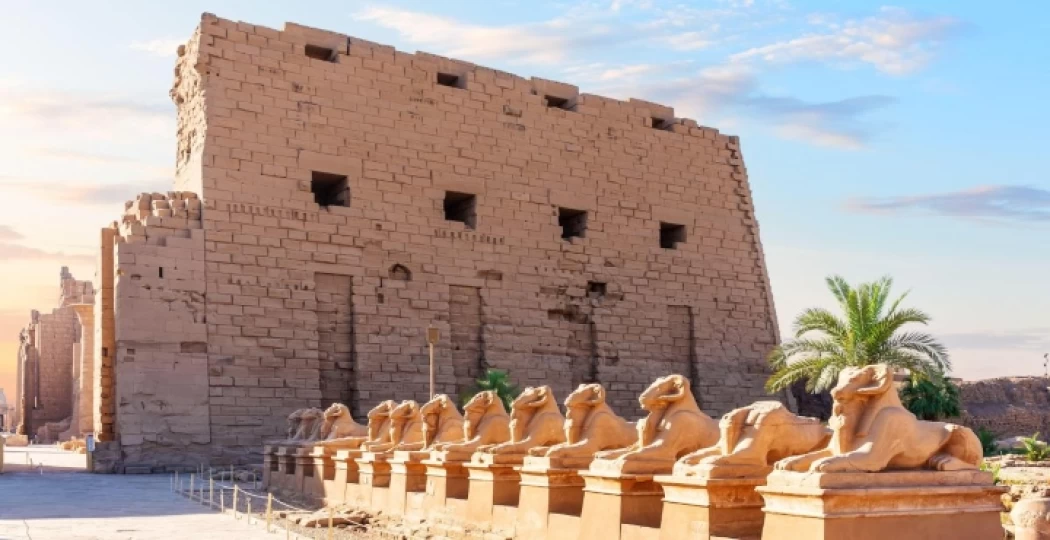
Reviving Luxor's ancient “Road of the Rams”
Road of the Rams
The revival of the Pharaonic Kabash Road, with a length of 2,700 meters linking the temples of Luxor and Karnak, is the largest national archaeological project that is currently taking place within Luxor Governorate to serve the tourism movement during the coming period, as it is the most important project that takes place on the land of Luxor, and the work is followed up by Dr. Mostafa Waziri, Secretary General of the Supreme Council of Antiquities, which receives great support from the state and the government to continue work on this huge national project that President Abdel Fattah El-Sisi pays great attention to, to support the tourism movement in southern Egypt.
The Kabash Road project is one of the most important national projects, and the focus of the state, represented by the Ministry of Tourism and Antiquities, to speed up the completion of the project, to become a global tourist attraction, which is why follow-up is carried out periodically, explaining that about 97% of the development of the Kabash Road project has been completed.
The road connects Luxor Temple to Karnak Temple with a series of rams on both sides with a length of 2700 meters, and a great deal of progress has been made in preparation for its completion soon and the opening ceremony in a manner befitting Egypt in front of the whole world, in the presence of leaders and officials of countries and embassies from around the world, the rams road is one of the greatest historical works.
A ram is a symbol of the god Khnum, one of the main gods in the ancient Egyptian religion, which is the creator god who created humanity on the Fakharani wheel - according to the ancient Egyptian religion - these rams were surrounded by flower beds and streams of water to irrigate them and in the middle of a rectangular floor of 120 by 230 cm of sandstone to facilitate walking on it and between each statue and statue a gap estimated at 4 meters, in addition to what Queen Hatshepsut mentioned on the walls of her red palace in Karnak.
More than 5,000 years ago, the kings of Pharaonic Egypt in Thebes built the Road of the Rams (the Road of the Apocalypse), which connected the temples of Luxor and Karnak for the sacred processions of the kings and gods in the celebrations of the Opt festivals every year. The king was led by the high-ranking people of the ministers, high priests and statesmen behind the sacred boats that carried statues of the gods, while the people lined up on both sides of the road, dancing and playing in joy and happiness.
The construction of this road was started by King Amenhotep III, who started the construction of the Luxor Temple, but the largest share in the implementation of this road is due to King Nakhtinbo I, the founder of the Thirtieth Dynasty of the Pharaohs (the last dynasty of the Pharaohs era) There are 1,200 statues along the 2.72 km long and 700 meters wide road
These statues were carved from one block of sandstone and are held in two forms, the first takes the form of the body of a lion and the head of a human being, the lion is one of the symbols of the sun god, and the second in the form of a ram's body and a ram's head.
“There in Egyptian Thebes, where the heaps of gold shine, Thebes with a hundred doors, where four hundred men with their horses and chariots pass in a military march from each of its huge doors,” he said. It was the administrative capital of Upper Egypt during the reign of the sixth pharaonic dynasty (3000-2100 BC) and did not assume its high position that reached the sky, until the late twenty-first century BC, when the princes of Thebes were able to unify the country from the White Sea in the north to the first waterfall in the south.
And when Egypt was exposed to the invasions of the Hyksos coming from the north ... and united the two lands, Upper and Lower Egypt, and then the seat of government moved to Thebes and remained there for more than four centuries.













